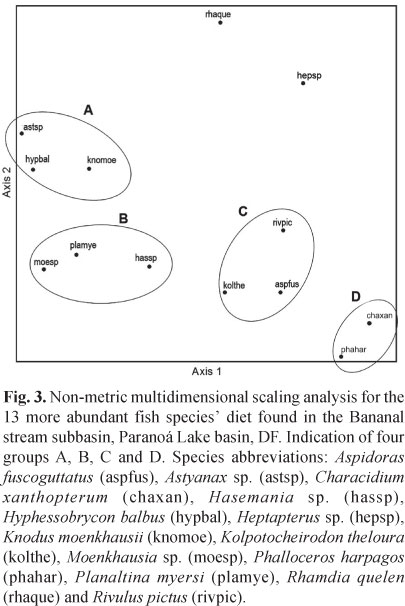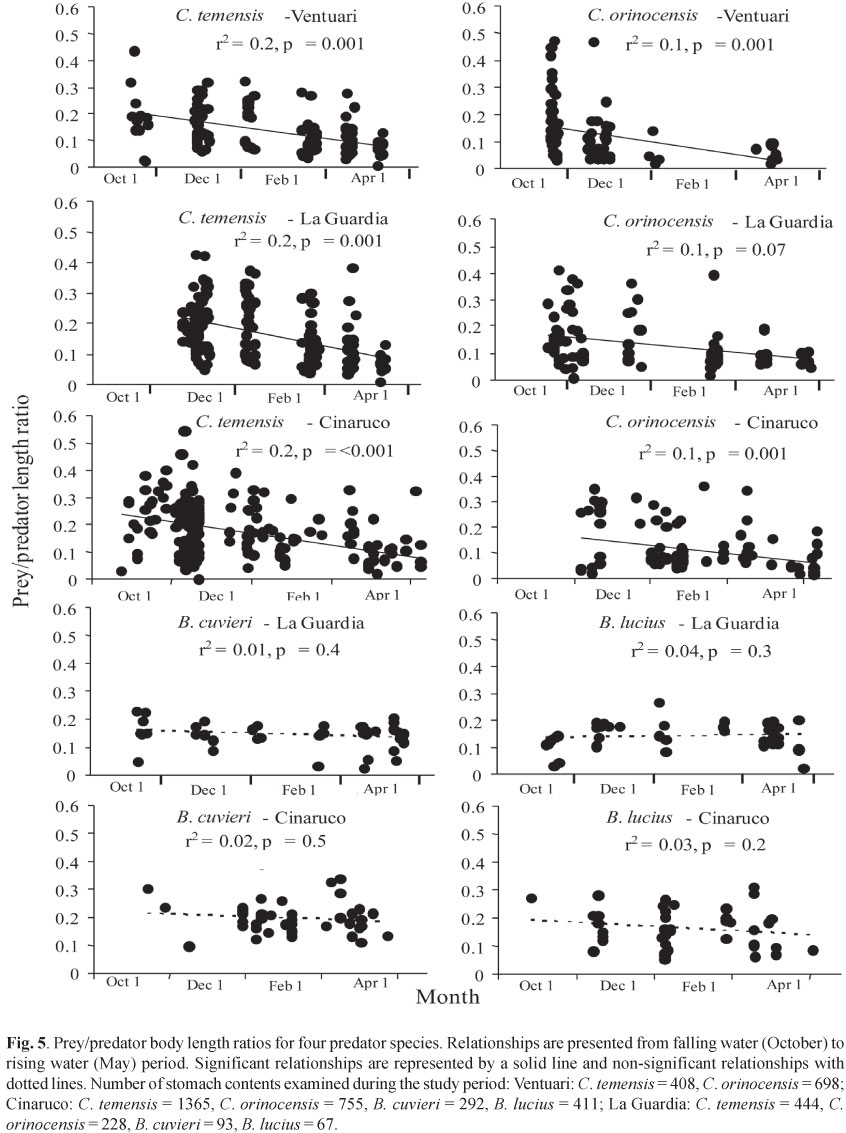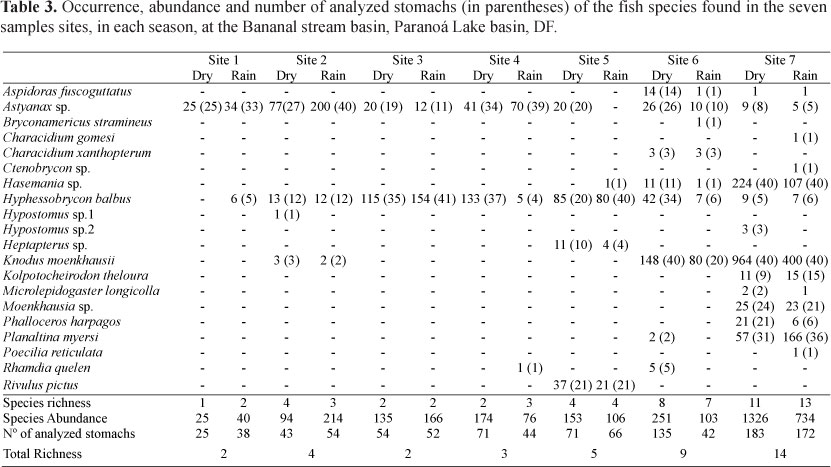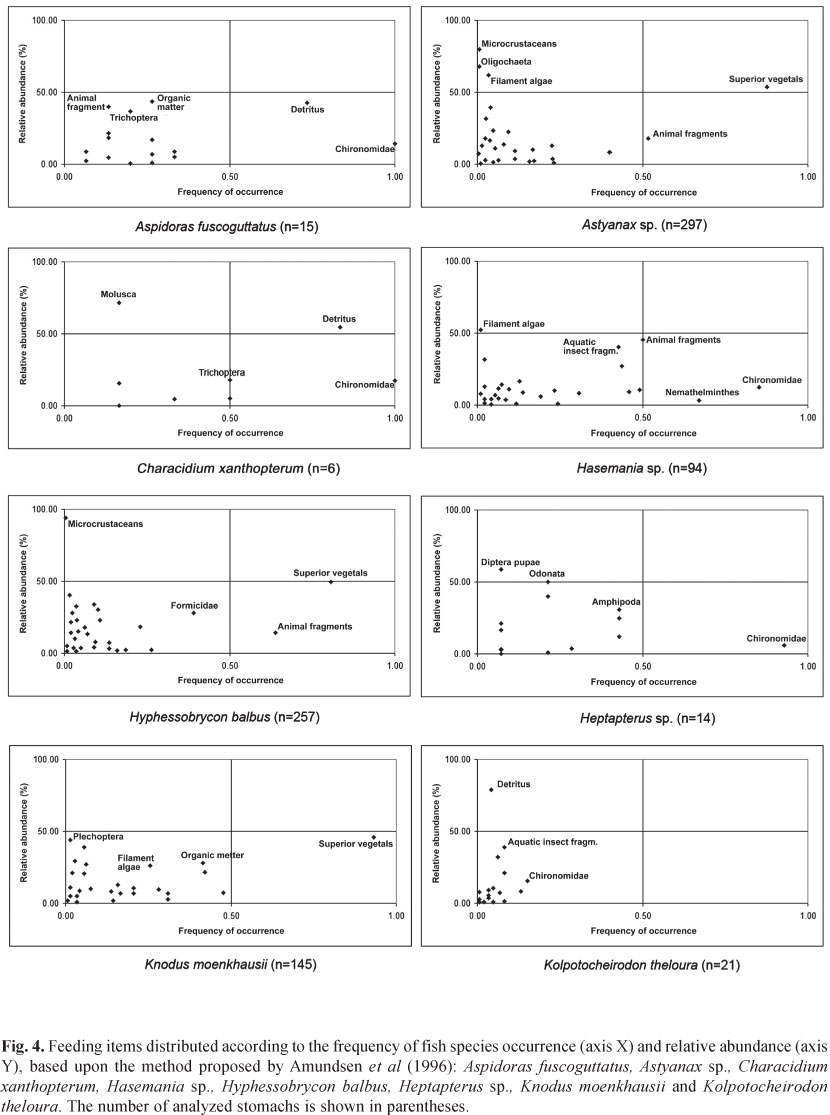The aim of this study was to determine the trophic structure of the fish community in the Bananal stream subbasin, which belongs to a well-preserved Cerrado area (Brazilian Savanna) in Brasília National Park, Brazil. We also evaluated the influence of environmental variations in the diet of fish species. Four samples were taken in each 30 m long established transect, two in the rainy season and two in the dry season. A total of 1,050 stomachs of the 13 most abundant species were analyzed. A total of 36 food items were consumed, where 24 were autochthonous, 8 allochthonous, and 4 of undetermined origin. Non-metric multidimensional scaling (NMDS) analysis, in addition to the results of frequency of occurrence and abundance charts, was used to determine four groups of feeding guilds: detritivores, omnivores (tending toward herbivory and invertivory), invertivores and piscivores. Around 69% of the volume of resources consumed was allochthonous, which proves the importance of the resources provided by riparian vegetation. The contribution of autochthonous and allochthonous items in the diet differed due to seasonality for Aspidoras fuscoguttatus, Astyanax sp., Characidium xanthopterum, Hyphessobrycon balbus, Kolpotocheirodon theloura, Moenkhausia sp., Phalloceros harpagos, and Rivulus pictus. Despite the Cerrado climate characteristics, there was no significant influence of season on the fish diet. The absence of seasonal variation and the predominance of allochthonous items in the fish diet are probably associated with the presence of riparian vegetation, which acts as a transition area in the Cerrado biome and provides resources for the aquatic fauna. This work shows the importance of studies in non-disturbed areas considered here as a source of information concerning the biology of fish species and as a guide for direct conservation policies on the management of aquatic resources, recovery of damaged areas and determination of priority areas for conservation.
Feeding guilds; Seasonal variation; Stream fish; Trophic ecology












